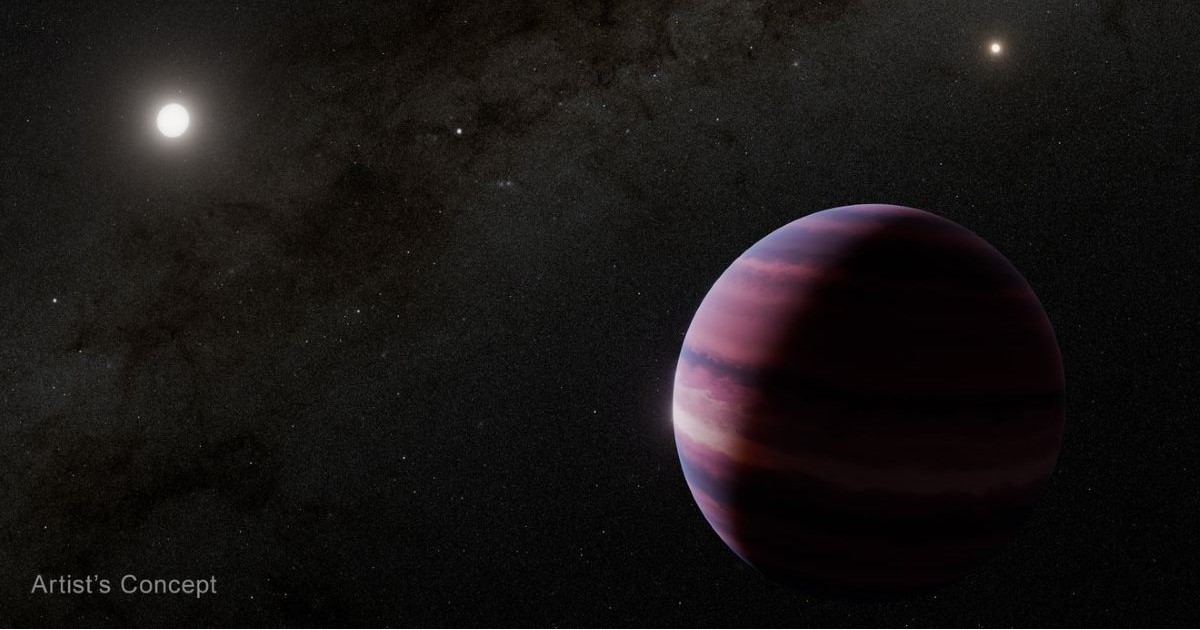
NASA, ESA, CSA, STScI, Robert L. Hurt (Caltech/IPAC)
When compared to our own solar system, our nearest star system – the Alpha Centauri triple star system – is quite unusual.
For starters, as the name suggests, it contains not one but three stars: Alpha Centauri A and Alpha Centauri B, which are like our own Sun, and Proxima Centauri, which is a red dwarf star.
When it comes to what else exists in the star system – well, scientists have yet to truly understand what, or perhaps even who orbits those stars. Three planets are known to orbit Proxima Centauri, but for Alpha Centauri A and B, their planetary companions, or lack thereof, are still something of a mystery.
But thanks to some incredible technology, and some even more incredible minds, scientists from NASA’s Jet Propulsion Laboratory (JPL) have spotted something that appears to be a planet orbiting Alpha Centauri A, with their findings explained in a recent NASA JPL statement.

NASA, ESA, CSA, Aniket Sanghi (Caltech), et al
The planet, the researchers believe, is a gas giant close to the mass of Saturn, and follows an elliptical orbit that varies between one and two times the distance from which Earth orbits our Sun.
Even though it is a ‘giant’, and situated only four light years away from Earth, the planet was extremely difficult to detect, for several reasons. First of all, it is far away – so far that two of the world’s most powerful space telescopes, NASA’s James Webb Space Telescope (JSWT) and the European Southern Observatory’s Very Large Telescope (VLT) are alone in having spotted it.
But one of the key issues is its location: both Proxima Centauri A and B are extremely bright, blocking the view of the planet most of the time as a result. In fact, over three rounds of trying, JPL scientists using the JSWT have only been successful in detecting the planet once, and even then the JSWT’s Mid-Infrared Instrument (MIRI) required special masks to block the power of the stars and see beyond them.
What happened the other two times? Well computer models that predict the planet’s orbit suggest that the planet regularly moves too close to its home star to be visible even through our super-powerful space telescopes, and the timelines in which researchers tried to spot the exoplanet fell in line with those times when many orbit models suggested it would not be visible.

NASA, ESA, CSA, Aniket Sanghi (Caltech), et al
Though, as a gas giant, the planet is not somewhere we (or any known life forms) could survive, it is in its star’s Goldilocks Zone, according to NASA. Thus, the identification of this planet is fascinating to researchers, and can help us to understand potentially habitable exoplanets further, as JASA JPL and Caltech’s Charles Beichman explained in the statement:
“With this system being so close to us, any exoplanets found would offer our best opportunity to collect data on planetary systems other than our own. Yet, these are incredibly challenging observations to make, even with the world’s most powerful space telescope, because these stars are so bright, close, and move across the sky quickly. Webb was designed and optimized to find the most distant galaxies in the universe. The operations team at the Space Telescope Science Institute had to come up with a custom observing sequence just for this target, and their extra effort paid off spectacularly.”
When the exoplanet can be observed once more, further evidence will help to conclusively classify this exoplanet, which in turn could help us decode more of the secrets of planetary formation and survival.
And with future, high-tech space telescopes set to launch into space in the coming years, our ability to see beyond our own solar system, to study and understand other star systems and their exoplanets should only increase.
If you thought that was interesting, you might like to read about why we should be worried about the leak in the bottom of the ocean.
Categories: NATURE/SPACE, SCI/TECH
Tags: · alpha centauri a, alpha centauri b, centauri triple star system, JWST, proxima centauri, science, single topic, space, space exploration, space telescope, space travel, top, VLT

